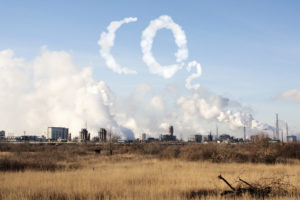What Is Carbon Dioxide?
Most people are familiar with carbon monoxide. Carbon dioxide (CO2) on the other hand, doesn’t get as much attention. Similar to carbon monoxide, CO2 is an odorless, colorless gas. Science Daily defines carbon dioxide as a chemical compound composed of one carbon and two oxygen atoms. CO2 is present in the earth’s atmosphere and acts as a greenhouse gas. Did you know that in its solid state, it’s dry ice? It sounds innocent enough, but exposure to high levels of carbon dioxide can be deadly.
Danger in the Brewery
Several industries utilize carbon dioxide in their production processes. The craft brewing industry knows all about CO2 because it’s a natural byproduct of the brewing process. The gas is normally contained in fermentation tanks, but the gas can escape. CO2 weighs more than air, meaning if it escapes from the fermentation tank, it may settle on the floor. A CO2 gas detector sounds an alarm letting staff know there is a potential problem with escaped gas.
Firefighters at Risk
Firefighters put themselves in danger every time they answer a call for assistance. It’s not just fire that presents danger; firefighters may also be exposed to CO2 gases. For example, they use carbon dioxide gas canisters to help put out fires. There are also some types of spray insulation that contain Icynene. In a fire, this foam produces CO2 gas. Gas canisters pose a threat if they leak. Using CO2 gas detectors allows fire crews to monitor exposure to this deadly gas.
Detection Is the Key to Prevention
Preventing carbon dioxide poisoning depends on early detection. The brewing industry is not the only place where workers risk exposure to high levels of CO2. Agriculture, construction, machine shops, and industries that specialize in biofuel production all face the potential to be exposed. CO2 gas monitors are a necessity in the workplace to protect not only staff, but also products and inventory. You may already have gas monitors in place. If so, take a few minutes to learn more about where they are, and how they work.
How CO2 Gas Detectors Work
CO2 gas monitoring systems may be large, stationary units, or, depending on the application and industry, they can be portable units. Similar to some carbon monoxide detectors, these detection systems work by sounding an alarm when they sense a high level of CO2 in the air. The unit also has an LED read-out, which shows gas levels. Some units are able to store readings over time as well. If you aren’t sure whether your industry requires gas monitoring, take the time to do some research. You may save lives.







